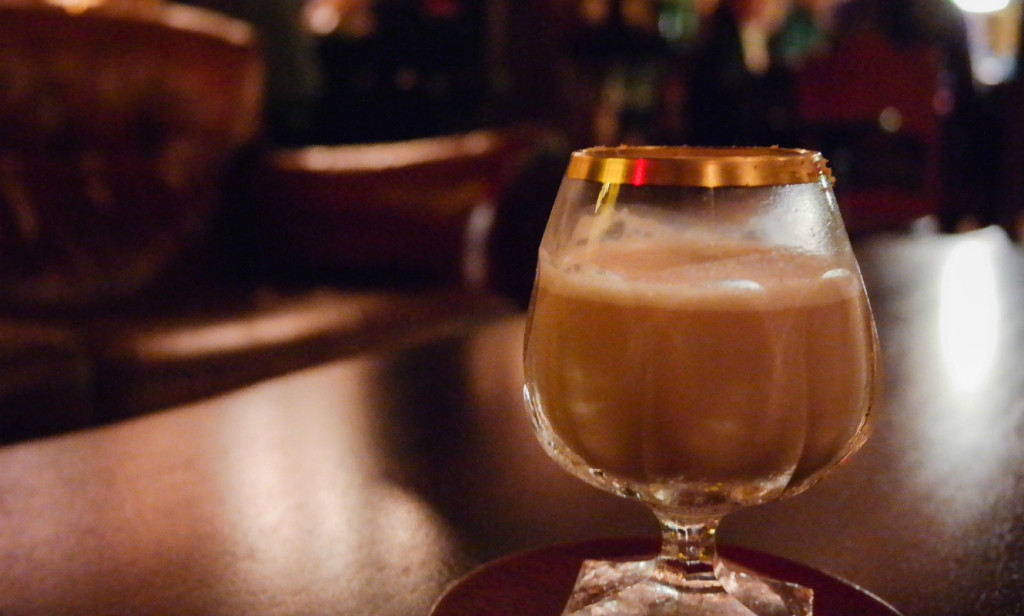The Nog of War

As a young boy, I always looked forward to the holiday season — I knew we’d have a beautifully decorated tree breathing life into our home and neatly wrapped gifts awaiting my enthusiastic fingers. As time went on and the disillusionment of getting older began to set in, I noticed the magic disappearing. The Christmas tree became smaller and less ornate, the gifts became more practical and less fun, the snow became a chore instead of a treat, and my excitement cooled like the blistering breeze blowing over the sunless hellscape of winter.
Getting older has its costs and benefits, and the new perspectives afforded to us change our tastes and desires; my favorite holiday is now Halloween (probably because that’s the only day we can truly be kids again without repercussions or odd looks), even though Christmas reigns supreme among all generations as America’s favorite. I may sound like a curmudgeonly old man, but it’s a simple truth that with wisdom comes a bit of misanthropy. However, all love is not lost; to date, nothing brings a twinkle to my eye quicker than seeing the first batches of eggnog line the supermarket shelves during our cold winter months.
Eggnog, like so many other classic drinks, has a bit of a murky history. Most believe that eggnog has its roots in a drink dating back to the 15th century known as “posset,” which was basically boiled milk that had ale or liquor added to curdle the milk, with spices added for flavor. It seems aristocrats enjoyed adding eggs and finer quality liquors to their posset, which the plebs did not have easy access to at the time. As for the term eggnog itself, it first appears in Isaac Weld’s Travels Through the States of North America and the Provinces of Upper and Lower Canada, during the years 1795, 1796, and 1797. Weld states:
The American travellers, before they pursued their journey, took a hearty draught each, according to custom, of egg-nog, a mixture composed of new milk, eggs, rum, and sugar, beat up together. …
Eggnog became a popular drink in the 18th and 19th centuries, with President George Washington having his own boozy and delicious recipe to delight party guests. In a less refined moment of American history (and one we’ve previously covered here), cadets at West Point started the Eggnog Riot of 1826 while trying to outsmart their officers’ orders for temperance. Ultimately, the pursuit of eggnog led to assaulted officers, destruction of property, and the expulsion of nearly a dozen cadets. Needless to say, with or without alcohol, eggnog has been a central part of America’s drinking ethos for years.
I have a go-to, ready-made, non-alcoholic eggnog that I love to drink during cool nights in front of a warm, crackling Yule log (this one is my personal preference if interested; look for the glass bottles), but nothing beats making your own boozy, frothy, creamy ‘nog in the comfort of your own slippers and ugly sweaters. Therefore, without further ado, I present my personal eggnog recipe:
The ‘Nog of War:
- 1½ Ounces French cognac (I prefer Gilles Brisson)
- ¾ Ounce dark rum (I like El Dorado 5 year old)
- ¼ Ounce of St. Elizabeth’s Allspice Dram
- 2 Ounces whole milk
- 1 Ounce heavy cream
- 1 Ounce simple syrup
- One whole egg
- Freshly grated nutmeg
Chill a large wine goblet with ice. Add all ingredients except nutmeg into a metal shaker tin and dry shake without ice for a few seconds. Open the shaker tin and add ice and shake very hard for 15–20 seconds. Double strain with your Hawthorne and tea strainers into the emptied goblet. Grate whole nutmeg over the drink and enjoy.
This is a pretty boozy drink, and is quite filling, so just one can get you into the holiday spirit pretty quickly. The rich texture and warming sensation of this drink will show you why eggnog has stood the test of time and is still a large part of our celebrations today. Happy Holidays from War on the Rocks, and we hope you don’t lose your noggin while you’re imbibing. As always, cheers.
Andre Gziryan is a Soviet-born American who prefers G.I. Joe to Uncle Joe. He is a former barman who currently works as an international trade analyst at the Department of Commerce. What he lacks in military knowledge he makes up for with a love of all things creative and spirituous.
Photo credit: Visitor7

